Kim Jong-un: North Korean leader rides up Mount Paektu
- Published
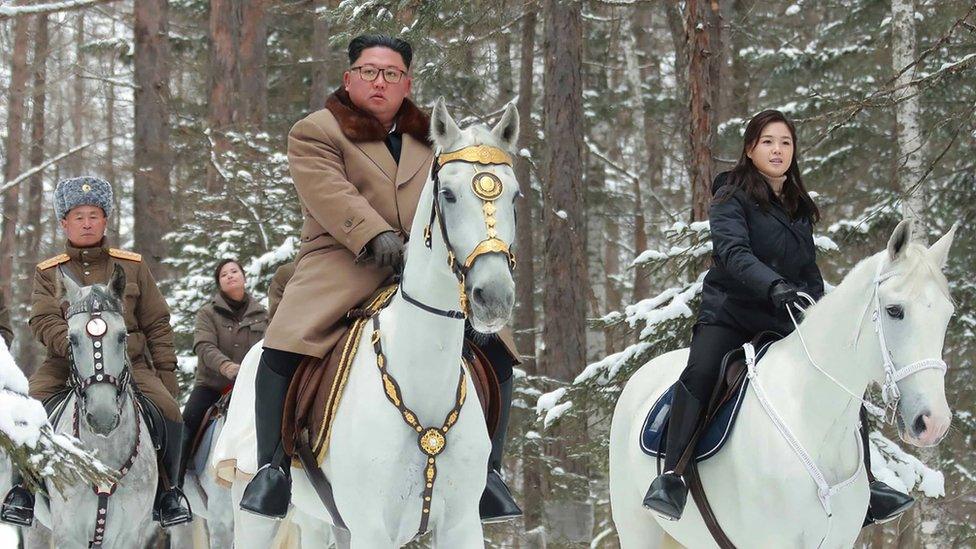
Kim Jong-un was joined by his wife and senior military officials
North Korea has released photographs of its leader Kim Jong-un once again riding on horseback up the country's sacred Mount Paektu, a move steeped in symbolism.
It is the second time in less than two months that the North Korean leader has been pictured riding a white horse up the secretive state's highest mountain. In the latest images, he is flanked by his wife and senior military officials.
Previous trips up the mountain have preceded major announcements.
The latest horse ride came as state media reported that there would be a rare meeting of the ruling party's leaders later this month to discuss "crucial issues" in line with "the changed situation at home and abroad". It did not give further details about what would be discussed.
Mr Kim has set a year-end deadline for the US to offer more concessions to salvage nuclear negotiations. In a statement on Tuesday, North Korea's deputy foreign minister said it was up to the US to choose what "Christmas gift" it got from Pyongyang.
What do we know about the trip?
The state-run Korean Central News Agency (KCNA) released several photos on Wednesday of Mr Kim, his wife and senior military officials riding white horses on the snow-covered Mount Paektu.
KCNA reported that Mr Kim looked around the "revolutionary battle sites" near the mountain before riding to its summit.
He was previously reported to have scaled the 2,750-metre peak on horseback in mid-October.
On the latest trip, he reminded North Koreans to "always live and work in the offensive spirit of Paektu", according to KCNA. Mr Kim said doing so was important at a time when "the imperialists and class enemies make a more frantic attempt to undermine the ideological, revolutionary and class positions of our party".
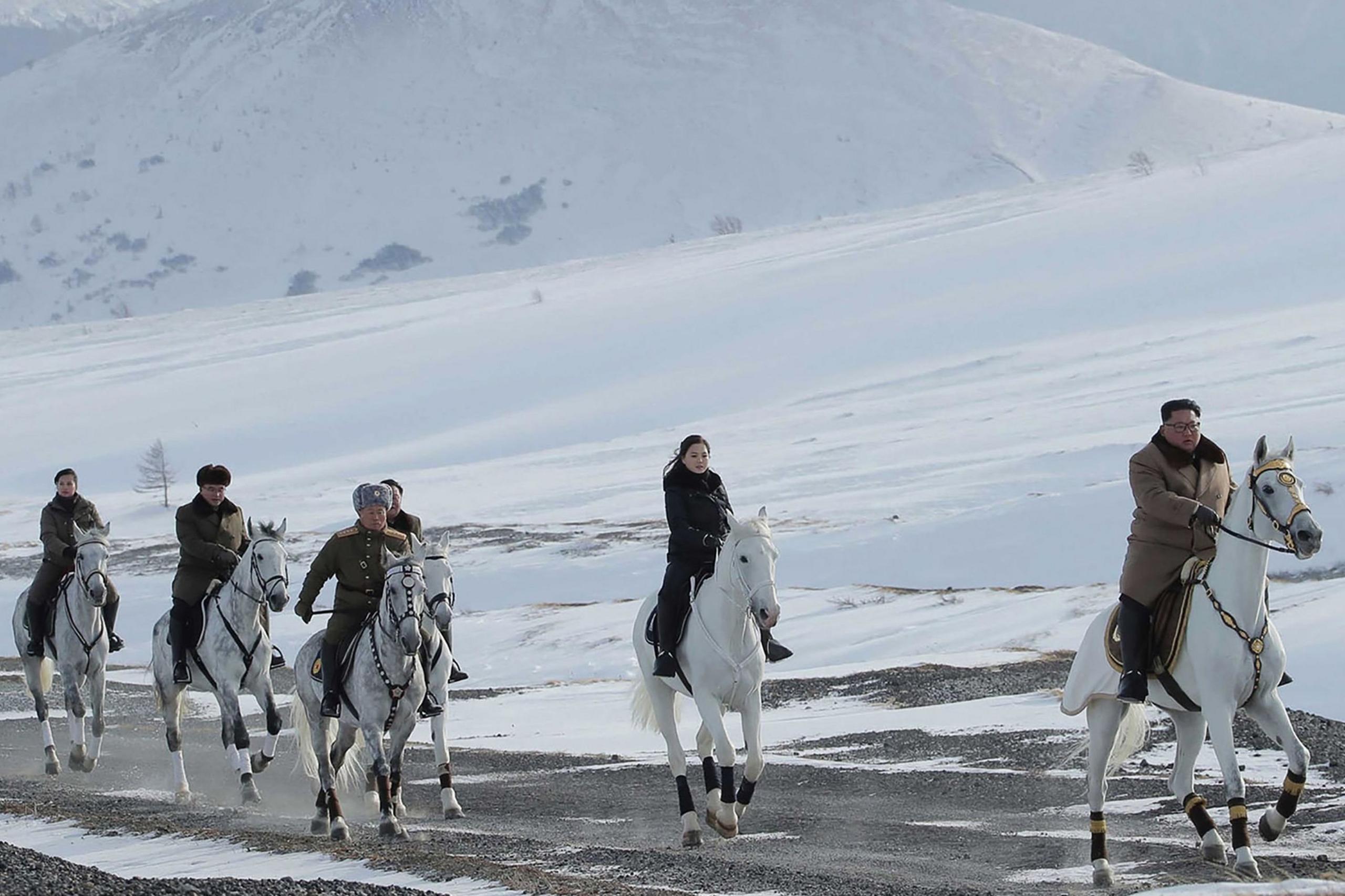

"It is the consistent determination and will of our party to defend and carry forward for eternity the glorious revolutionary traditions which took roots in Mt Paektu," he added.
What is the symbolism?
Mount Paektu holds a special place in the country's identity. An active volcano, it is feted as the birthplace of Mr Kim's father Kim Jong-il and served as a key military base for his grandfather Kim Il-sung - North Korea's founding leader.
The peak of the mountain, lying on the border with China, is considered a sacred place in Korean folklore.
It is said to be the birthplace of Dangun, the founder of the first Korean kingdom more than 4,000 years ago.
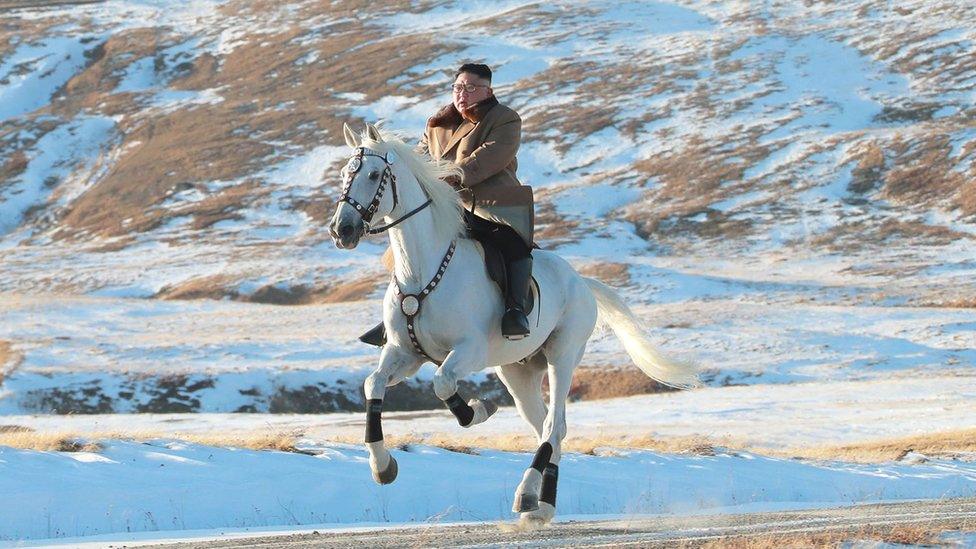
Kim Jong-un astride a white horse on a snow-covered Mount Paektu in October
It is also part of the propaganda which glorifies the Kim family, who are said to have a "Mount Paektu bloodline".
North Korea leadership expert Michael Madden told the BBC that "horse riding and horses have great symbolism in Korean culture in general and in [North Korea's] political culture in particular".
Horses feature in Korean mythology through Chollima, a horse with wings that is said to run at least 400km (248 miles) a day, and Mallima, a horse that can run very long distances at extremely fast speeds. References to both have been used in economic construction drives in the country, Mr Madden said.
He added that by riding a horse, Mr Kim was also alluding to Kim Il-sung's "origins as a guerrilla fighter which is a way of burnishing 'anti-imperialist' credentials".
What could it mean?
Analysts say the trip could signal preparations for a more confrontational stance.
"The message is buckle up, it's going to be a big year for us next year," Professor John Delury of Seoul's Yonsei University told Reuters news agency. "Not a year of diplomacy and summitry, but rather of national strength."
He added that the forthcoming meeting of party leaders was also significant. "This is not a standard meeting," he said, explaining that it was the first time such a gathering had occurred twice in one year under Mr Kim.
Rachel Minyoung Lee, an analyst with monitoring website NK News, said the decision to hold the meeting before the end of the year "indicates its strong resolve".
"Taking the party plenum announcement and the Mount Paektu visit together, the 'resolve' seems to be that North Korea will not cave in to the US, and that it will keep charging on despite the difficulties," she told Reuters.
Nuclear talks between North Korea and the US have stalled, with Pyongyang seeking more concessions to return to the table. It has given the US until the end of the year to drop its "hostile policy" or warned that it would pursue a "new path".
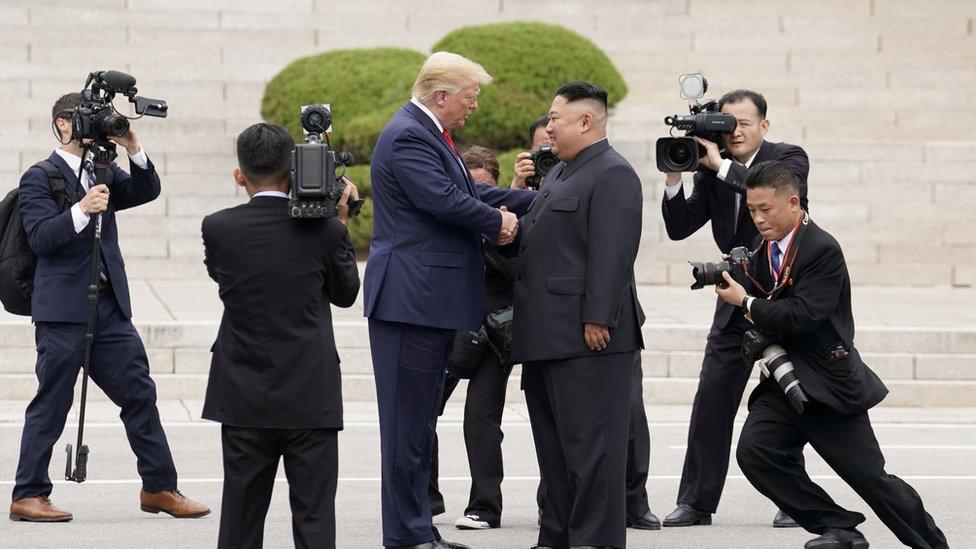
Donald Trump met Kim Jong-un in the demilitarised zone separating the two Koreas earlier this year
The US has called on Pyongyang to give up significant portions of its nuclear arsenal before sanctions are eased.
Experts have said it is unlikely that the US will make new proposals that will satisfy North Korea.
On Tuesday, US President Donald Trump called on Mr Kim to denuclearise.
"Now, we have the most powerful military we [have] ever had, and we are by far the most powerful country in the world, and hopefully we don't have to use it. But if we do, we will use it," he said, according to the Associated Press.
When else has Kim been up the mountain?
Mr Kim has reportedly ascended the mountain several times in the past, often before making big announcements.
Significant visits have included a 2017 trip to the mountain which came a few weeks before his new year's address where he hinted at a diplomatic thaw with South Korea.

Kim Jong-un is pictured on top of Mount Paektu in 2015
The following year, he made a joint visit to the mountain with South Korean President Moon Jae-in.
The visit two months ago prompted speculation of a change in Pyongyang's nuclear negotiation strategy.

You might also be interested in:
What it's like to negotiate with North Korea, by former US diplomat Christopher Hill
- Published16 October 2019

- Published19 April 2015
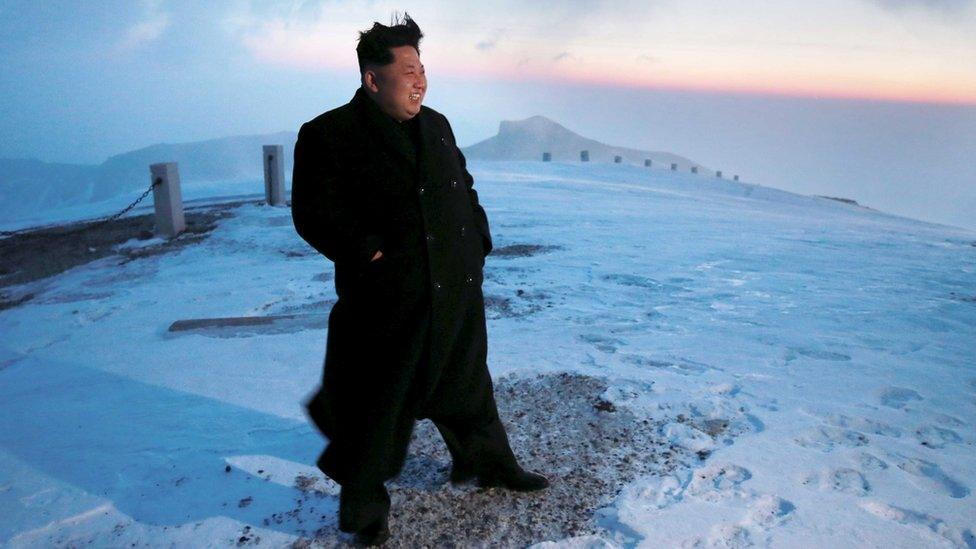
- Published19 October 2019
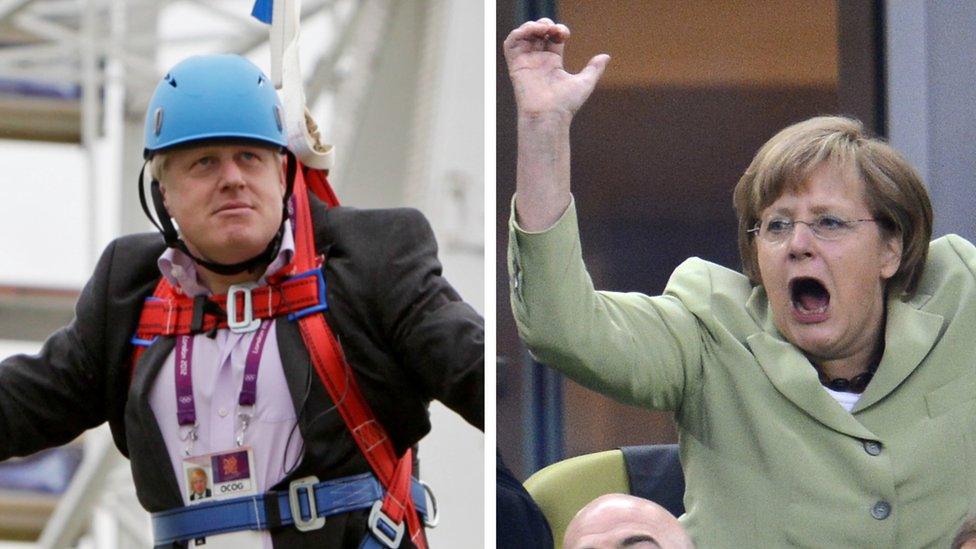
- Published5 September 2023
